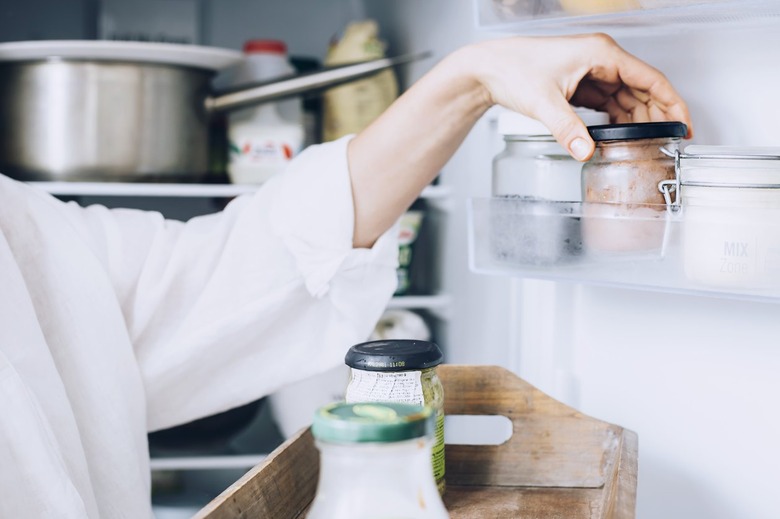You're Probably Storing The Food In Your Fridge All Wrong
We may receive a commission on purchases made from links.
When you put groceries away in your fridge, do you have a specific system or do you just place items wherever they'll fit? According to registered dietitian Judy Barbe, author of Your 6-Week Guide to LiveBest, having a plan is best because specific areas of your refrigerator are meant for certain foods.
In the back and at the bottom of the fridge, where it's coldest, you should be storing your most fragile food (aka the food you want to keep as preserved as possible). This includes raw meat, poultry, and fish — all of which should be stored on their own tray to prevent contamination — and dairy products.
When it comes to the front of the fridge, Barbe says,"The biggest source of heat in a fridge is the warm air that rushes in every time you open the door." With this in mind, you'll want to place foods and drinks you plan on consuming ASAP toward the front of your fridge — like leftovers or beverages you drink on the daily. This is also a helpful idea if you want to remind yourself to eat certain foods that are about to go bad, resulting in less food waste.
Since eggs are a food you want to remain as chilled as possible, and most people use them frequently, the center of one of your fridge shelves is the best place for them. Barbe also recommends keeping the eggs in their original carton, since it protects them from absorbing the other odors and flavors in your fridge. Plus, it will remind you of when the eggs will expire!
You'll also want to be picky about what you store in the drawers at the bottom of your fridge. That explains why some fridges even have labels for these compartments, such as "meat" or "vegetables." Barbe says you should follow these instructions or create your own bottom-of-the-fridge areas for certain foods: "Place meat in the meat drawer, or on the back bottom shelf. Cheese goes in the cheese area, while fruits and vegetables go in the crisper drawers."
Seems easy enough, but Barbe adds that if your fridge's drawers have levers to control humidity, you should use them. "Lettuce, spinach, and other greens that wilt last longer in the high-humidity drawer," she explains. "By keeping the vent closed, moisture is held in the drawer, keeping the greens fresh longer. Greens want some moisture, just not too much. They keep best if cleaned and dried."
In the low-humidity drawer with the vent open, on the other hand, you'll want to store produce that isn't sensitive to moisture loss. Examples include apples, avocados, ripe bananas, mangos, pears, and stone fruits like apricots, nectarines, peaches, and plums.
Lastly, on the fridge door, you guessed it — you should be storing your condiments and sauces. Since these products tend to have preservatives like sugar and salt in them, they won't be drastically affected by any warm air that rushes in when the fridge is open.
With this information as your guide, you, too, can have an organized fridge worthy of a TikTok video.
